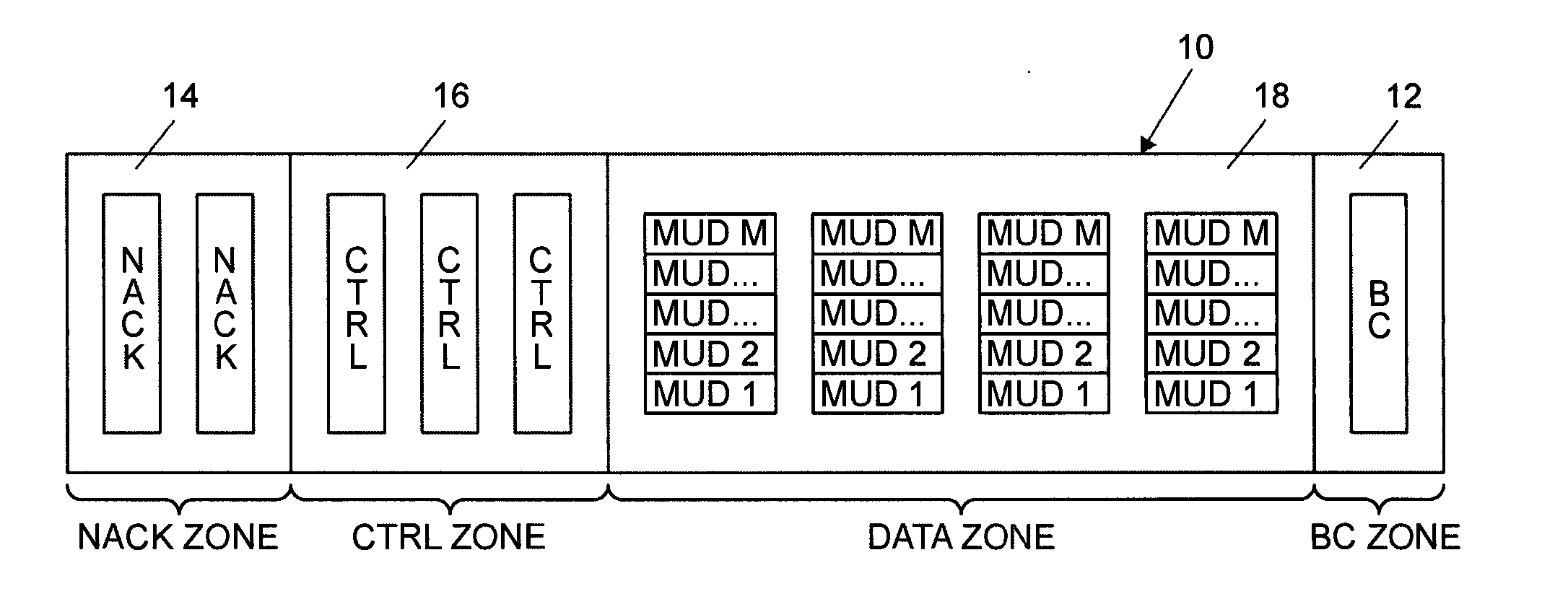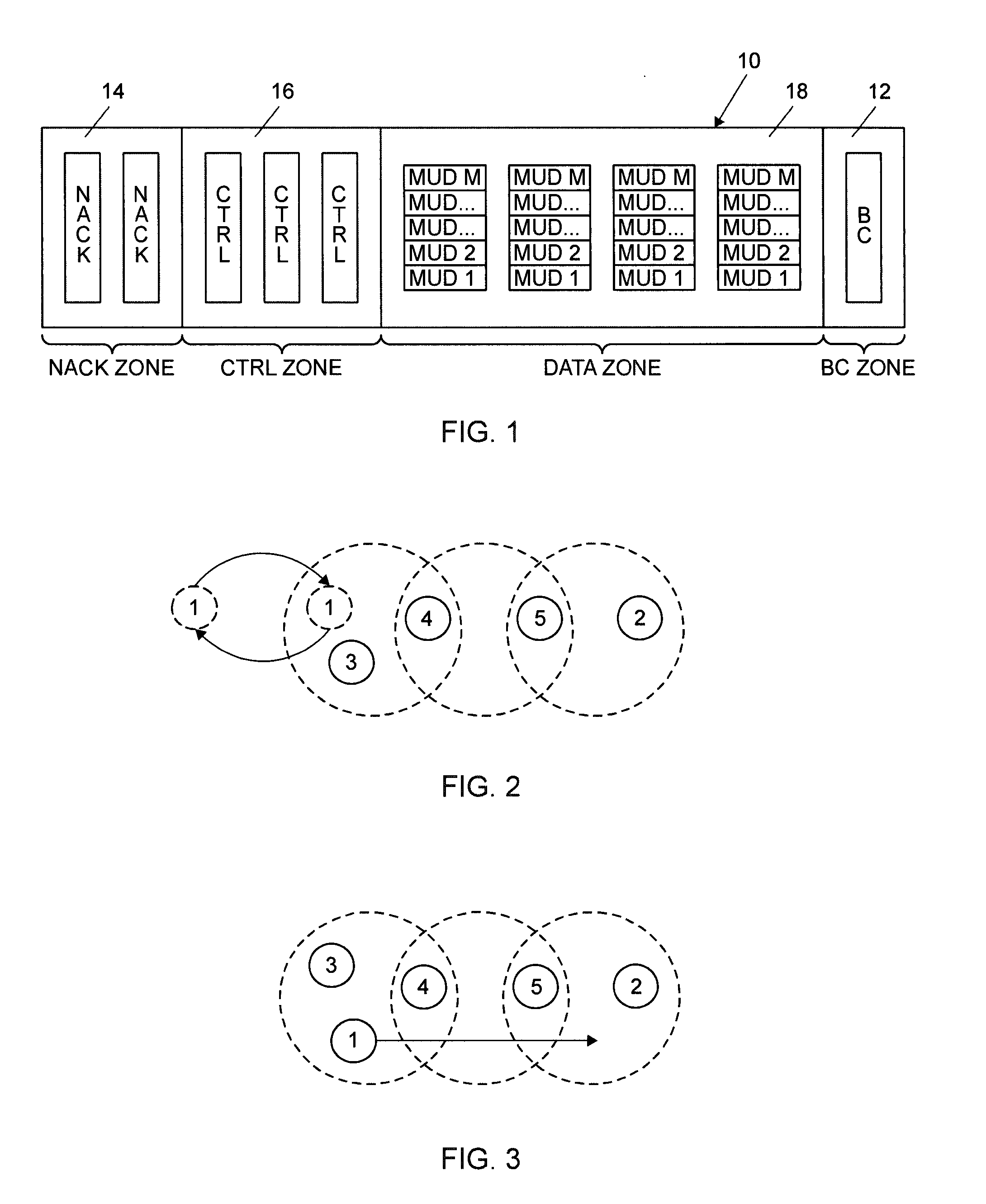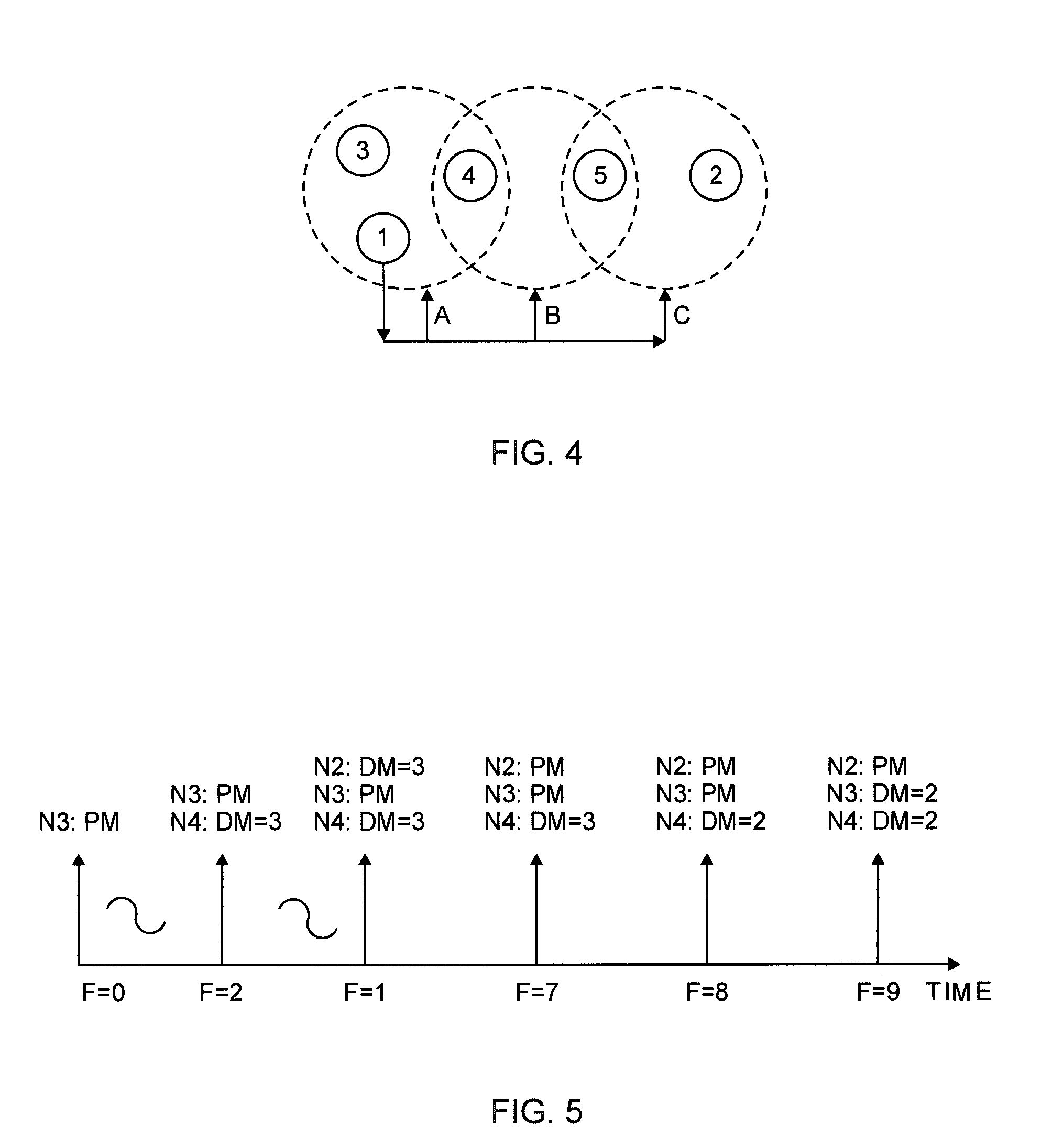Multiuser detection enabled medium access control in mobile ad hoc networks
a multi-user detection and access control technology, applied in the field of mobile ad hoc networks, can solve the problems of increasing the spectral efficiency of the wireless communication network, presenting a major hurdle to increasing the spectral efficiency, and little work on system design or implementation that addresses these concerns
- Summary
- Abstract
- Description
- Claims
- Application Information
AI Technical Summary
Benefits of technology
Problems solved by technology
Method used
Image
Examples
example 1
20 Nodes
[0071]Each node transmits to another node using one slot-code. The probability of error for each received packet is PER(Rx)=1%. This is also the probability of each destination node generating a NACK response, or PER(NACK)=1%. The probability of more than one node detecting a packet error in the NACK zone 18 (the probability of a NACK collision, PCnack) would be
PCnack=1−0.9920−C201*0.9919*0.01=1.69%.
example 2
10 Nodes
[0072]Each node transmits on two slots to another node. The probability of each destination node sending a NACK response equals the probability of any of the node's received packets being in error, or PER(NACK)=1.99%. In this case, PCnack would be
PCnack=1−0.980120−C101*0.98019*0.0199=1.60%
[0073]It can be shown that for the same frame structure as in FIG. 1 and the same retransmission limit but with different link patterns, a similar level of PER can be obtained. With more slots configured in the NACK zone 14, a much lower probability of missing a NACK response can be achieved. Preferably, IP layer retransmission is employed in case NACK responses are not delivered successfully to the source nodes of the associated data packets.
Scalability Analysis
[0074]DIMA networks are intended for use in variety of applications. The timing frame 10 therefore needs to support networks with a large number of nodes efficiently. In other words, channel efficiency and performance cannot degrade...
PUM
 Login to View More
Login to View More Abstract
Description
Claims
Application Information
 Login to View More
Login to View More - R&D
- Intellectual Property
- Life Sciences
- Materials
- Tech Scout
- Unparalleled Data Quality
- Higher Quality Content
- 60% Fewer Hallucinations
Browse by: Latest US Patents, China's latest patents, Technical Efficacy Thesaurus, Application Domain, Technology Topic, Popular Technical Reports.
© 2025 PatSnap. All rights reserved.Legal|Privacy policy|Modern Slavery Act Transparency Statement|Sitemap|About US| Contact US: help@patsnap.com



